Equip yourself when starting cycling
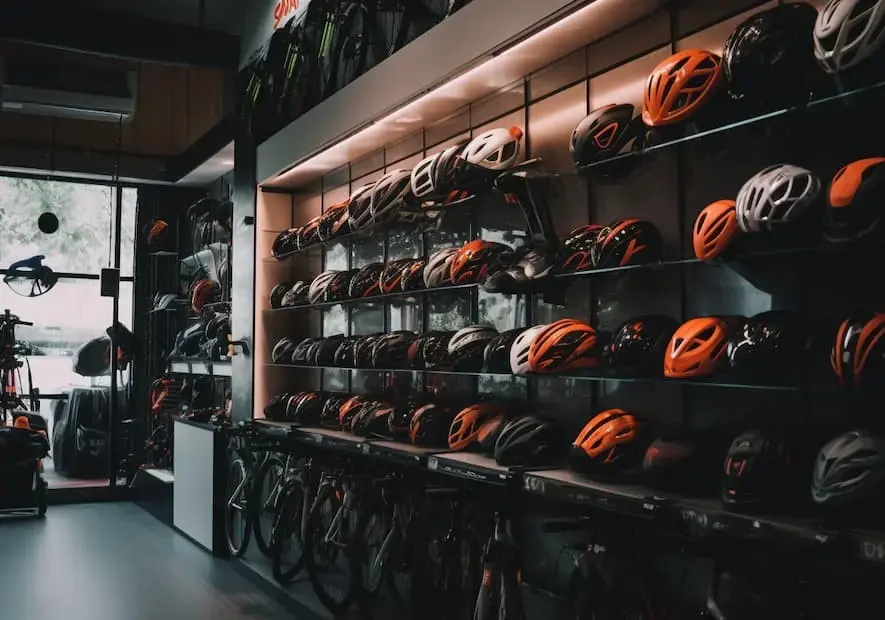
- 1. A Brief Introduction to Cycling
- 2. Essential Gear for Beginner Cyclists
- - Choosing the right bicycle
- - Helmet and safety gear essentials
- - Basic cycling apparel
- - Important cycle maintenance tools
- 3. Tips for Choosing Your First Bicycle
- 4. Fundamental Cycling Skills Every Beginner Needs
- - Mastering balance and coordination
- - Learning to shift gears effectively
- - Braking techniques
- - Tips on cycling uphill and downhill
- 5. The Key Role of Safety Measures in Cycling
- - Importance of wearing a helmet
- - Using traffic signals and signs
- - Cycling safety in adverse weather conditions
- 6. Exploring Cycling Training Programs
- - The significance of physical conditioning
- - Structuring a cycling training plan
- - The inclusion of rest and recovery
- 7. Nourishment: The Fuel for Cycling
- 8. Cycling Clubs and Communities: A Beginner's Guide
- 9. The Environmental Impact of Cycling
- 10. Final Thoughts: Celebrating the Cycling Lifestyle
1. A Brief Introduction to Cycling
As our world evolves relentlessly towards increasing digital interactions and digital "living," the allure of more traditional, physically engaging activities like cycling is becoming all the more appealing. Embracing cycling either as a hobby or a mode of transportation delivers a myriad of benefits. Not only does it serve as a low-impact, eco-friendly alternative to fuel-powered vehicles, but it also presents an excellent means of exercise, contributing significantly to one's health and wellness. The rhythmic turn of the pedals often stirs a rhythmic dialogue between heart and mind, offering a sense of peace that's hard to replicate elsewhere. If you are harboring thoughts of trying out cycling, you are on the verge of embracing one of the most fulfilling and beneficial lifestyles out there. So, are you ready to get pedaling?
- Why people choose cycling
Why people choose cycling is an interesting conundrum to delve into. From the outside, it's easy to think it's all about fitness or environmental concern. While these are undeniably compelling reasons, the allure of cycling runs deeper. Freedom is the keyword many enthusiasts would utter passionately. Feeling the wind rush past as you cruise down a gentle slope, the thrill of conquering a challenging trail, the satisfaction of mastering your mind and body to push a little further each day — it's an unparalleled symphony of sensations. Moreover, the world looks different when viewed from the saddle of a bicycle. It's a unique blend of exploration and the simple joy of being outdoors, spectating the world in its raw, unadulterated form. It's not just about the destination, but the journey itself. Then there's the appeal of mingling with a like-minded community, of beginning as strangers bound only by love for cycling, and gradually evolving into friends, mentors, and confidantes. Cycling is not just a hobby – it's a lifestyle, a therapy, a sport, and for many, an escape from the mundane. We choose cycling because it offers not just a better commute or a healthier body, but a richer, rewarding life.
- The numerous benefits of cycling
Cycling is not just a means of transport or a weekend pastime, it's a groundbreaking way to enhance your health and wellness while having fun. When we cycle, our body releases endorphins, the 'feel good' hormones, which boosts our mood and promotes a sense of well-being. But the benefits are also physical. Cycling strengthens our leg muscles, enhances our cardiovascular fitness and promotes flexibility. Being low-impact, it's kinder to our joints than running or gym workouts; making it a great option for all ages. Plus, cycling helps burn calories, contributing to weight management. What's more, cycling improves our balance and coordination. It's also a versatile activity that can fit into our daily routine. Think of how many short car trips you could replace with a bicycle ride, generating zero pollution while also saving on fuel costs! Cycling is indeed an eco-friendly alternative. Moreover, there's the opportunity to join local cycling clubs, build relationships, and increase your motivation through group activities. In this era of digital disconnection, that's a benefit that shouldn’t be underestimated. In short, the numerous benefits of cycling make it not just a worthwhile activity, but a lifestyle choice that contributes significantly to our physical health, mental wellness, and impact on the environment. So where do you keep your cycle?
2. Essential Gear for Beginner Cyclists
Entering the world of cycling requires not just a bike, but the right gear. Choosing a suitable bicycle for your needs is the first step. Different types vary in design and componentry, with each tailored to a specific kind of ride. Safety is paramount; thus, a well-fitted helmet, along with other protective gear, should always be worn. Cycling apparel like comfortable shorts and jerseys are beneficial for long rides. Essential tools for maintenance shouldn't be underestimated; they'll ensure your ride remains smooth and reliable. As a novice cyclist, investing in these basic equipment plays a vital role in your overall cycling experience.
- Choosing the right bicycle
Choosing the right bicycle is not just about comfort, it's about safety and performance too. The world of bicycles can be confusing, with countless types and designs available. But don't worry, we'll simplify things for you. Firstly, identify the intended purpose of your new bicycle: are you looking for a thrilling off-road experience, or calming rides along city streets? Or perhaps you're aiming for long-distance touring? Identifying your end goal helps to narrow down your bicycle types; mountain bikes for off-road, road bikes for city commuting, and touring bikes for long distances. When considering which model to go for, crucial aspects include the bike's size, frame, tires, and gear setup. Your height and reach largely determine the appropriate bike size to ensure your comfort. The frame material impacts weight and durability; steel, for instance, is sturdy but heavy, while aluminum is lighter but less robust. Tires should be chosen based on the terrain, with wider types offering better stability. Finally, see the gear setup; a greater number of gears allow for a wider range of speed and assist in climbing slopes. Remember, a well-chosen bicycle isn't just about a smooth ride; it's your trusty companion on many future adventures. It's worth taking the time to make the right choice.
- Helmet and safety gear essentials
When it comes to cycling safety, it's unwise to overlook the importance of a quality helmet and other reliable safety gear. A helmet, undoubtedly, is your first line of defense in an unforeseen mishap. Potential hazards on the road are numerous, and you must remember to protect your most vital asset—your head. Choose a helmet that meets safety standards, fits snugly, and offers a high level of comfort for those long rides you'll undoubtedly fall in love with. Aside from a helmet, other relevant safety gear includes cycling gloves and pads or padded shorts designed specifically for cycling. Gloves ensure a good grip on the bicycle handles, regardless of sweat or rain, while the pads offer protection and comfort for those initial days when your body is still adjusting to the bicycle seat. Pads can dramatically reduce the risk of discomfort and injuries, allowing you to continue working on your cycling skills. Speaking of skills, it's equally essential to equip your bike with a basic light system if your rides are likely to extend to hours of poor visibility. Front and rear lights will make you visible to others on the road and help you navigate safely. In conclusion, while the thrill of cycling can be captivating, never underestimate the power of protective gear in ensuring a safe and enjoyable ride.
- Basic cycling apparel
Donning the right basic cycling apparel can indeed amp up your cycling experience. As a beginner, your comfort and efficiency on the saddle significantly depend on what you wear. Cycling shorts with padding, known as a chamois, are a must-have. The unique design significantly reduces friction and provides a buffer, making those long rides more comfortable. Say goodbye to pain and discomfort with these shorts crafted for your ultimate comfort! Cycling jerseys are another essential. Typically crafted from moisture-wicking material, they are designed for comfort, breathability, and to keep you dry, crucial in both sweltering and cold environments. Most come with back pockets, perfect for storing snacks, tools, or your phone. Don't forget cycling shoes. The stiffer soles improve pedaling efficiency, and specific types can anchor your feet to the pedals, enhancing control and balance. Lastly, add cycling gloves to your ensemble. They lessen handlebars' impact, reducing the chance of hand numbness and enhancing grip strength. Ensuring you have the right apparel is key to making your newfound passion for cycling a smoothly enjoyable one. So, are you ready to gear up and embark on your cycling adventure?
- Important cycle maintenance tools
When you embark on your cycling journey, one factor that ensures a smooth ride is the presence of sturdy, well-tuned cycle maintenance tools. Irrespective of whether you are a leisure cyclist or a budding pro, maintaining your trusty bicycle is an integral aspect of cycling. Think of it like a car; you wouldn’t want it breaking down amidst your journey, right? That’s where your maintenance tools come in handy. From compact bicycle multi-tools that cater to quick tune-ups and adjustments, to tire levers and patch kits that assure a seamless ride, having the essential tools ensures that your bicycle stays in peak condition. What's more, including a chain tool in your arsenal can help you tackle chain issues which are quite common. And yes, don’t forget the air pump! Regardless of how new or old a bike is, tire pressure can fluctuate, so having your own pump surely saves the day. Remember, taking care of our ride isn’t just about safeguarding our trips, it's about prolonging the life of our faithful biking companion and enhancing our overall riding experience.
3. Tips for Choosing Your First Bicycle
Are you toeing the line to buy your first bicycle but finding it a daunting task? Worry not! Here are some pointers to help you choose your first set of wheels. Firstly, understand the different types of bikes - mountain bikes for off-road trails, road bikes for speed on tarmac, hybrid bikes for versatility, and so on. Your choice should mirror your riding ambitions. Secondly, factor in the bike's size, your budget, and its components like brakes, gears, the saddle, etc. Remember, a perfect bike is an extension of you - comfortable, practical and agreeably matching your cycling dreams.
- Understanding different bicycle types
When plunging into the world of cycling, a critical stepping stone is understanding different bicycle types. What initially might appear as a daunting task is, in reality, quite a stimulating experience when you break it down. Primarily, bicycles are classified into four types: road bikes, mountain bikes, hybrid bikes, and cruisers. Each type comes with its unique features and functions. For instance, road bikes thrive on paved streets, making them ideal for swift city rides or long-distance touring. Contrastingly, mountain bikes are designed for off-road trails, equipped with rugged tires and robust frames for maximum durability. Meanwhile, hybrid bikes merge the best of both worlds, offering the speed of a road bike and the toughness of a mountain bike, making them a versatile choice. Lastly, cruisers, with their comfortable design and effortless handling, are excellent for casual biking around town. Depending on your preferences, riding style, and biking conditions, your choice of bicycle might differ. Hence, getting the hang of the various bike types is integral to your cycling journey. Now, aren't you eager to explore, learn and choose your first ride?
- Factors to consider in a bicycle
When deciding on your first bicycle, a handful of essential factors should guide your choice. Functionality is paramount. This essentially implies determining what your cycling objectives are, which might range from fitness, travel to merely leisure. Each requires distinct bicycle types. The next crucial aspect is your budget. The price spectrum for bicycles is vast. However, don't be swayed by cheaper imitations that compromise on quality, as this could lead to frequent breakdowns and higher maintenance costs in the long run. Size is another vital consideration. Bicycles come in diverse sizes, and finding a suitable one ensures optimal comfort and maneuvering ability while riding. Apart from the size of the bicycle, the bike's type also counts. Road bikes, mountain bikes, hybrid bikes, each has its unique features tailored to different terrains and uses. Lastly, pay close attention to the components’ quality of the bicycle, such as the gears, brakes, and the material from which the bike is made. By factoring all these aspects, you can be assured of a satisfying, secure, and enjoyable cycling experience.
4. Fundamental Cycling Skills Every Beginner Needs
Riding a bike appears simple, yet, for novices, there are certain vital skills that are essential to master. Gaining balance and coordination is the first step towards successful cycling; this is the spine of biking that ensures a smooth and safe ride. Also, it is crucial to learn how to shift gears effectively. Proper gear shifting can considerably ease your ride, especially for uphill and downhill terrains. Furthermore, having complete control over breaking techniques helps in preventing mishaps. Lastly, biking uphill and downhill demands divergent strategies: it's a delicate art that one cannot ignore. Understanding these skills will make a world of difference in your cycling journey.
- Mastering balance and coordination
Mastering balance and coordination are fundamental cycling skills that every beginner needs to learn. Achieving perfect balance on your bike is all about trusting your instinct, and a lot about practice. Remember, cycling is a dynamic process – your body will always be making small adjustments to keep you upright. Beginners can start by practicing on flat, open spaces before hitting the busy streets or treacherous trails. On the other hand, coordination is a multi-faceted skill in cycling. It involves synchronizing your steering, pedaling and braking in a way that allows for smooth and efficient movement. One way to improve your coordination is through targeted drills, such as riding in a straight line or circling around cones. Balance and coordination in cycling are not just about performing tricks or taking sharp turns, but they are about ensuring safety and gaining confidence on the road or trail. The more you ride, the better your balance and coordination will get. So, don't be discouraged if you're a little wobbly at first. With patience, practice, and perseverance, you'll soon be cycling with grace and ease.
- Learning to shift gears effectively
Learning to shift gears effectively is a crucial skill for every beginner cyclist. As you embark on your cycling journey, emboldening this ability will not only increase your efficiency but also maximize your comfort and safety. The knack of shifting gears comes with understanding your cycle's gear system. Typically, bicycles have two sets of gears - front (near the pedals) and rear (on the wheel) - each designed for different cycling conditions. Bigger, higher gears are for tackling slopes, while smaller, lower gears are ideal for speed on flat surfaces. When it comes to mastering this skill, a golden rule is to always keep your pedals moving while shifting gears. An abrupt gear change when you aren't pedaling could result in a jammed chain or, worse, damaging your bike's gear system. Remember, it's not a one-size-fits-all skill. Every cyclist has a unique rhythm and understanding your unique cadence will help you shift gears more smoothly. Don't be afraid to experiment with different gear combinations and detect what works best for you. After all, the goal is to ride more comfortably and efficiently, isn't it? Practice, patience, and perseverance- that's your gear-shifting mantra! In a nutshell, effective gear shifting is all about rhythm and timing; embrace it, and you'll certainly enhance your cycling experience.
- Braking techniques
Mastering the art of braking is a pivotal technique for every beginner cyclist. This is not just for the sake of stopping, but it can significantly improve overall bike handling. By correctly utilizing the front and rear brakes, you can regulate your speed and maintain stability during downhill rides. For most bikes, the right hand controls the front brake and the left controls the rear. As a beginner, it's critical to remember not to jam the brakes abruptly as it might lead to accidents. Instead, apply each brake in a slow, gradual motion. Moreover, it's worth noting that your front brake holds more stopping power than the rear. So, a golden advice? Use both brakes concurrently to achieve a smooth, controlled stop. As a greenhorn, don't shy away from practicing this in a safe, traffic-free environment until it becomes second nature. Remember, practice breeds confidence. Also, consider the terrain - brake early when on a wet surface as brakes can be less effective. Being adept with braking techniques can be your insurance on the road, always keeping you prepared for any sudden stops or changes in the terrain. It's not just about stopping, it's being in control.
- Tips on cycling uphill and downhill
Climbing an uphill or racing downhill on a bike offers a whole new set of challenges for beginner cyclists. Firstly, mastering uphill cycling needs a combination of mental toughness and the right approach. You need to maintain a consistent pedaling cadence, shifting to an easier gear as the incline increases. It's essential not to exhaust all your energy; keep your rhythm sustainable and steady. Downhill cycling, on the other hand, is often thrilling but can get scary for beginners. The key here is to control your speed and not let the slope control you. Make sure your hands are always on the brakes, but don't clench them too hard as it might cause an abrupt halt. Lean slightly back on your seat when moving downhill, it helps maintain the bike’s balance. Also, keep looking ahead and not at your front wheel, as your bike will follow your line of sight. Remember, practice is crucial because comfort and skill develop with time. You will discover what works best for you once you conquer a few high hills. It’s all about enjoying the ride because when you’re having fun, the challenge doesn't seem as daunting.
5. The Key Role of Safety Measures in Cycling
The concept of safety cannot be overemphasized when immersing oneself in the world of cycling. Let's be clear, folks - it's not just about donning a helmet and speeding off. In fact, cycling safety measures extend far beyond the helmet. Despite being critical, a helmet is just one piece of the comprehensive safety puzzle. To ensure a secure ride, you should acquaint yourself with traffic signals and signs, maintaining your presence of mind on the road, especially when traffic is heavy. Cycling in adverse weather conditions like rain or snow, warrants additional safety precautions. Remember, safety is a responsibility - to yourself and others on the road. Stay aware, stay informed, and every cycling journey will be a memorable adventure.
- Importance of wearing a helmet
Understanding the crucial importance of wearing a helmet when cycling cannot be overstated. Not only is it a crucial safety measure, but it's also the law in many parts of the world. While there is an undeniable sense of liberation that comes with feeling the wind whip past your face as you ride, a helmet can protect you from potentially life-altering injuries if ever you meet an accident. According to the National Highway Traffic Safety Association, helmets are up to 85-percent effective in preventing head injuries. Science has proven time and time again how much helmets can enhance the cyclist's safety. Apart from the significant safety benefits, wearing a helmet also promotes responsibility and respect among riders. By donning a helmet, you're signaling to your fellow cyclists that you take safety seriously. This instills a sense of trust and solidarity in cycling communities. In essence, your helmet doesn't simply protect you—it also sends a message to everyone you ride with. So, are you ready to strap on safety and boost the cycling culture of caution and care?
- Using traffic signals and signs
Cycling on the road isn't just about having the skill to pedal, it also involves understanding and strictly adhering to the rules of the road. Knowledge of traffic signals and signs is absolutely crucial. It's not an area where beginners, or indeed any cyclist, can afford ambiguity. Think of it this way-from stop signs to speed limit posts, traffic signs illuminate the rules of the road. Ignoring them doesn't just increase the risk of an accident, it's also illegal. Let's shed some light on the most common signs. A red light signifies a command to halt, while green gives you the go-ahead. A flashing yellow light might be perceived as perplexing, but it simply advises caution. Turning signals are indispensable too. When a cyclist is turning left, they should extend their left hand out, and for a right turn, they should extend their right hand. But this isn't about mastering the cyclist lingo or looking professional, it's about communicating your intentions to drivers and pedestrians. Remember, the road isn't a private track, but a shared space. Busting the myth of 'burstiness', predictability, not spontaneity, is key when it comes to cycling on the road. Safety should always supersede speed or style. So, let's imbibe and adhere to these 'signs of safety' for a smoother ride. Remember, traffic signals and signs are the lifelines of the road. Respect them!
- Cycling safety in adverse weather conditions
Cycling in adverse weather conditions, especially for beginners, can be quite a daunting task. In these circumstances, ensuring your own safety becomes paramount. We usually associate cycling with sunny days and smooth pathways but let's pause and think about those sudden showers or even winter cycling. Do you just stop cycling? Certainly not. Practicing precautionary measures can help make your rain-or-shine cycling journey safe and enjoyable. Firstly, equip yourself with the appropriate rain gear. Your safety lies in remaining dry and maintaining the body’s temperature. Starting from waterproof clothing to fenders, all play a crucial role. Secondly, we need to consider the visibility factor. Adverse weather tends to decrease visibility, hence, securing your bicycle with good quality lights is essential. Lastly, understanding the change in road conditions is pivotal. Wet roads or icy surfaces considerably increase the biking hazards. Remember, that speed isn't your friend in these conditions. Being aware of these factors and equipping yourself accordingly can help you achieve a safe cycling experience, irrespective of the weather conditions. It is always better to be safe than sorry!
6. Exploring Cycling Training Programs
As a cycling enthusiast embarking on this invigorating journey, it's crucial to delve into suitable training programs that will elevate your riding skills and endurance. These cycling training programs are uniquely designed to cater to your physical abilities, ensuring gradual progression and effectiveness. Training isn't just about hopping on your bike and riding aimlessly; it necessitates structure and strategic planning. This might include incorporating a variety of cycling techniques, alternating intensity levels, and intentionally scheduling rest days for recovery. Remember, your muscles grow not when you’re pushing the pedals but during recovery periods. Isn’t it fascinating how your body works? Therefore, it's essential to incorporate a well-rounded cycling training plan to optimize your performance, enjoy the rides, and avoid injuries. Sounds like a win-win, right?
- The significance of physical conditioning
Physical conditioning is a critical component in the world of cycling. So, why is it essential for cyclists? Physical conditioning builds strength, resilience, and endurance in your body - elements paramount to efficient cycling. When you step into this sport, you aren't merely pedaling a bike but involving your entire body for a fruitful ride. That's why the act of conditioning is indispensable; it fortifies your beach's building blocks of stamina, helps in the effective harnessing of power, propels smoother and longer rides, and most importantly, safeguards you against potential injuries. It's akin to treating your body like a well-oiled machine, continually servicing and maintaining it to ensure it performs at its peak. Furthermore, a well-structured cycling training plan not only involves workouts but also pacing strategies that enable you to balance your exertion during the rides. Remember, cycling is about the strategic utilization of energy; spend all your power at once, and you'll find it hard to finish your ride. Hence, physical conditioning, akin to a behind-the-scenes yet vital part of your cycling journey, capacitates you to better handle these strategic nuances of energy control, unarguably making it a non-negotiable element in every cyclist's voyage towards mastery.
- Structuring a cycling training plan
Structuring a meaningful and effective cycling training plan is paramount to your continuous progress as a cyclist. It's pivotal to understand that training isn't one-size-fits-all; hence, tailoring a plan to your specific needs and goals should be a top priority. When drafting your training program, it's essential to set clear and achievable goals. Are you training for a race? Or just aiming to enhance your stamina? Once the goal is set, shaping your plan becomes much easier. Secondly, have a balanced mix of both high and low-intensity training. Too much high-intensity training can over-exert the body while concentrating solely on low-intensity workouts might limit your growth potential. A well-balanced mix fuels growth while allowing your body to recuperate properly. It's also crucial to incorporate rest days and periods into your training schedule; recovery is just as important as the exercise itself. Neglecting to rest will lead to burn out. Remember, Rome wasn't built in a day; your cycling prowess won't be either. Slow and steady often wins this race. Lastly, to keep yourself engaged and motivated, continually evaluate your progress and adjust your plan. A well-structured training plan is not static, rather, it's dynamic and evolves with your needs and improvement.
- The inclusion of rest and recovery
In the midst of heart-racing, adrenaline-pumping cycling sessions, it's easy to overlook the vital aspect of rest and recovery. Yet, the inclusion of downtime in your cycling training plan is as crucial as strapping on your helmet. Let's provide some perspective here: Imagine your body as a machine. Just as machines need regular maintenance and cool-down periods to function optimally, your body requires periods of rest to replenish energy and repair muscle tissue. This maintains not only your current performance level but sets the stage for progress. Now, you may ask, "what does rest truly mean for a cyclist?" Essentially, it's about finding the right balance rather than lying stagnant. Light activities such as stretching, yoga, or slow walks are perfectly acceptable. 'Active rest' as it's often coined, aids in flushing out toxins from your body, reducing muscle stiffness and promoting better blood circulation. Sleep too, plays a significant role in a cyclist's recovery. Give your body enough time to sleep and wake up naturally refreshed, ideally between seven to nine hours. You would be surprised how invigorated you could feel if you adopt timely and quality sleep sessions. Whether you're just starting your cycling journey or you're already clocking miles, it's important to remember that speed isn’t the only measure of success on the bike. Part of the harvest planted in your training is reaped while you're taking some much-needed breather - hence, making rest and recovery an indispensable part of your training regime. Remember, in cycling as in life, it’s as much about the journey as it is about the destination. So, gear up, ride with gusto, but don’t forget to listen to your body and respect its need for rest and recovery. Your future self, pedalling vigorously on a steep climb, will thank you.
7. Nourishment: The Fuel for Cycling
As a cyclist, nourishment is your fuel, powering every pedal and propelling you onwards. It’s essential to understand the role of diet and hydration for cycling performance. Like the well-oiled gears of a bicycle, a balanced diet keeps a cyclist's body running smoothly. Carbohydrates, as the primary source of energy, should be a stable part of your meals, particularly whole grains, fruits and vegetables. Equally crucial is protein, aiding in muscle repair and growth after rigorous rides. Don't forget fats, the good kind - think of avocados and fish - that works as energy reserves for longer cycles. Hydration, too, can't be ignored. Water loss through sweat, especially during uphill climbs or sweltering weather, must be promptly restored. Remember, cycling isn’t just a physical feat; it’s a testament to disciplined eating and drinking habits too.
- Balanced diet requirements for cyclists
Maintaining a balanced diet is crucial for cyclists who aim to reach their maximum potential. Cyclists, akin to other athletes, necessitate additional energy and nutrients to maintain body functions, repair tissues and sustain intense physical activity. The primary constituents of a cyclist's diet include carbohydrates, hailed for their unparalleled energy provisioning, amounting to around 60% of the total calorie intake. Protein, a pivotal nutrient for muscle recovery and repair, should consist about 15% of a cyclist's diet. Further, embracing healthy fats in moderate quantities provide much-needed energy reserves for long rides. The third pillar of a balanced diet for cyclists involves an array of vitamins and minerals. Essential ones such as calcium for bone health, iron to boost oxygen transport, and electrolytes for hydration regulation, all play vital roles. The regular inclusion of fruits, vegetables, lean proteins, and whole grain products, ensures these nutritional needs are met. A cyclist's diet should be optimally balanced not only to fuel the demanding physical activity but, most importantly, to maintain overall health and wellness. Always remember, a well-fueled body inherently possesses the capacity to perform and recover better. In the end, it’s not just about riding; it’s about riding healthily and sustainably. Is your diet fitting your cycling routine?
- The significance of hydration
Hydration forms a core part of any strenuous activity, particularly in cycling. Whether you're sweating it out on a long trail or commuting to work, keeping your body sufficiently hydrated is crucial. When we engage in intense physical activities like cycling, our bodies tend to lose a significant amount of water through sweat. This results in dehydration which could severely impact your cycling performance and thereafter your overall health. Water plays a quintessential role in fueling your muscles, keeping your body cool, and maintaining your concentration levels throughout the ride. That said, it's not just about drinking plenty of water. The trick to staying well-hydrated is understanding your body's unique requirements. Factors such as weather conditions, length, and intensity of the ride, along with individual fitness levels, influence your hydration needs. So, how can you ensure you're hydrating properly? Consider carrying a water bottle on your rides and hydrating at regular intervals. Sport drinks containing essential electrolytes can be used for longer rides. Remember, hydration is not just essential for your ride, but for your recovery too! Overlooking hydration could result in fatigue, muscle cramps, and dizziness. So, keep your water levels topped up and enjoy the ride!
8. Cycling Clubs and Communities: A Beginner's Guide
Venturing into the vibrant world of cycling isn't just about gearing up and hitting the road, it's also about the camaraderie and support found in cycling clubs and communities. As a beginner, you might feel a little lost in the sea of choices and tips. But, did you know joining a cycling group can be a game-changer? Here's why. A cycling club isn't merely a group of cyclists. It's a community that fosters learning, shares experiences, and provides an unparalleled sense of belonging. Whether you need advice on handling that tricky sloped path or tips for bike maintenance, your cycling community is your go-to resource. Just imagine having a cycle squad rooting for you, motivating you, and making your journey more enjoyable. So, how do you find these local cyclist communities? Stay tuned, as that's practically a ride away!
- Benefits of joining a cycling group
Joining a cycling group can nourish both your physical fitness and social well-being, offering a host of unparalleled benefits. Have you ever felt the thrill of pedaling together in a rhythm, sharing laughter, and racing towards a common goal? That's the sense of solidarity a cycling group offers. It's not merely about improving your stamina or shedding those extra pounds; it's about the collective shared experiences that you carve along the journey. Imagine traversing a challenging terrain or ascending steep hills; your cycling partners become your source of motivation, pushing you towards your limits while ensuring utmost safety. The spirit of camaraderie in such groups often sparks stimulating conversations and encourages mutual respect. Moreover, each member brings a unique skill set and experience to the table, thus creating a vibrant learning environment. Struggling with a flat tire or confused about the appropriate gear mechanism? There's always someone in your cycling group to lend a helping hand. Riding together also ensures greater safety, making you noticeable to motorists especially in low-light conditions. Lastly, the sheer joy of achieving shared goals, be it crossing a challenging uphill route or completing a 100-mile trip, is nothing short of exhilarating when done as a group. Simply put, being part of a cycling group makes your cycling journey more enriching and rewarding.
- How to find local cycle communities
Finding local cycle communities is an excellent way for beginner cyclists to immerse themselves in the vibrant biking culture. Starting with a simple online search can yield numerous results ranging from dedicated cycle clubs to casual biking groups. Websites such as Meetup.com serve as a treasure trove of local bike groups and other related cycling activities. Apart from the internet, local bike shops can prove to be a wealth of information. These shops usually have close connections with various cycling communities and can guide new cyclists towards a group fitting their specific interests and skill levels. Local charity rides or cycling events can also become a meeting point with fellow enthusiasts. Remember, cycling is not just an exercise; it's a lifestyle. Joining a cycle community can infuse your journey with extra doses of fun, adventure, motivation, and camaraderie. So, don't hesitate to take this step! Who knows? Your cycling adventures might just become a little more fulfilling when shared with a group that shares your love for biking. Isn't it amazing how a simple step like this can enrich your cycling experience exponentially?
9. The Environmental Impact of Cycling
Every journey we take leaves an impact on our planet; cycling, it turns out, is one of the gentlest ways we can traverse. Adopting the two-wheeler lifestyle goes beyond personal health benefits; it is a small but vital step towards environment preservation. When you pedal instead of starting an engine, you're actively reducing your carbon footprint, contributing less to air pollution and greenhouse gases. Riding a bike uses non-polluting renewable energy - your own! It's a green transport alternative that complements sustainable living while enjoying the great outdoors. Truly, cycling infuses your routine with a breath of fresh air, both literally and figuratively.
- Cycling as a green transport alternative
With rising pollution levels and cataclysmic climate changes, the need for green transport alternatives has become more imperative than ever. Cycling, in this regard, serves as a viable, economical and fitness-promoting solution. Unlike cars and motor-vehicles, which contribute heavily to greenhouse gases, cycling produces virtually no pollutants. Cycling offers an eco-friendly means of transportation that not only reduces carbon footprints but also promotes a healthier lifestyle. This incredibly beneficial mode of transportation aids in combatting the escalating issue of global warming, thereby playing a vital role in maintaining our planet’s health. It is highly effective, especially for shorter commutes; a distance cycled instead of driven can significantly decrease CO2 emissions. The sustainability aspect of cycling isn't the only perk; the correlation between cycling and improved health is unignorable. The exertion of regular cycling aids in cardiovascular fitness, builds muscle, improves blood circulation, and boosts overall physical endurance. Hence, this recreational activity cum transport alternative proves advantageous not only to personal health but to the health of our planet as well. Looking at these benefits, it’s hard to find reasons not to hop on a bicycle and pedal our path towards a greener, fitter future. So, why not ditch those gas-guzzlers and choose this econ-friendly cycling alternative? The choice to cycle is not only a personal commitment towards better health but also a stride towards environmental conservation.
- How cycling reduces carbon footprint
Cycling plays an indispensable role in combating rampant environmental issues, especially when it comes to carbon emissions. Every time you pedal, instead of turning on the ignition, you're making a significant contribution to the fight against global warming. How does cycling reduce carbon footprint? Well, it's simple. Bicycles don't burn fossil fuels. There are no exhaust fumes, no harmful emissions. Every mile traveled by bike, instead of a gas-guzzling car, saves around a pound of carbon dioxide. In essence, cyclists effectively become 'green warriors', dramatically reducing their personal carbon emissions, simply by choosing pedal power. It's estimated that if every American living within 5 miles of their work cycled to their jobs, it would save nearly 4 million tons of CO2 annually. To put that into perspective, that's the same as planting a forest almost twice the size of Rhode Island! Furthermore, the manufacturing process of building a bike is significantly less carbon-intensive than that of a car. So not only are you reducing emissions when you ride, but also from the moment you choose to buy a bike. Cycling, thus, presents an achievable, enjoyable, and highly effective way to become more environmentally friendly and lower our carbon footprints.
10. Final Thoughts: Celebrating the Cycling Lifestyle
Embracing the cycling lifestyle is more than just a hobby, it’s a decision that positively impacts not only your health but your general wellbeing. As you pedal with every stroke, you’ll discover a remarkable sense of freedom, a unique synergy with nature, and a profound connection to your body. The exhilaration of conquering your first hill, the camaraderie of cycling with friends, and the sheer joy of fresh early morning air against your face are experiences like none other. Cycling is not merely a mode of transport, rather it's a lifelong adventure that fosters fitness, friendships, and a newfound appreciation for the world around us. As you venture further into this engaging lifestyle, remember, every journey begins with a single pedal stroke.
- The fulfillment of cycling adventures
The fulfillment of cycling adventures truly brings a new level of exhilaration into life. Think about it - pedaling forth into the sunrise, surrounded by breathtaking landscapes, and experiencing that priceless blend of serenity and thrill - it's pure bliss, isn't it? But beyond the thrill, there's a profound sense of satisfaction that comes from pushing oneself to the limits, overcoming steeps, beating terrains, and discovering that you're made of so much more than you ever thought. Additionally, cycling raises your awareness of the little things in nature that usually pass unnoticed - chirping birds, rustling leaves, the shifting colors of the sky; it’s truly a refreshing burst of life. Each cycling adventure provides you with a story to tell, memories to cherish, or an unforgettable sunset you relished by yourself. Remember, there's no 'right' or 'wrong' way to experience the fulfillment of a cycling adventure. For some, it's about embracing solitude and self-reflection, for others, it’s about sharing these exciting moments with fellow enthusiasts. So, get that bicycle out and hit the trail – your next great adventure awaits you! Whatever you seek, rest assured, it's out on the road. Discover your rhythm, reconnect with nature and rediscover yourself through the charm of the ride. Remember to share your cycling adventures and inspire others to embark on their own. It’s never too late to start. Happy cycling!
- How cycling contributes to overall health and wellness
Cycling is more than just an exhilarating way to explore the great outdoors; it is a lifestyle that greatly contributes to our overall health and wellness. Plunging into the world of cycling opens avenues to a wealth of health benefits that go beyond physical fitness. Undeniably, cardiovascular improvements, strength building, increased coordination, and flexibility are all physical benefits derived from cycling. Yet, this activity transcends the physical. Ever heard of the term "cyclist's high"? It's akin to the well-known "runner’s high" and stems from the release of happiness-inducing chemicals in the brain during a ride. Cycling can boost mental wellness by reducing anxiety levels, battling depression, and enhancing mood. Besides, adhering to a regular cycling routine can be terrific for your sleep health. It aids in synchronizing your circadian rhythm while ridding your system of cortisol, the notorious neural-hormone that causes sleep disturbances. Lastly, cycling is a remarkable nature connection exercise that promotes mindfulness. It encourages us to observe, listen and feel our surroundings, taking us away from the mundane stressors. So, why not embrace the cycling lifestyle? It's a unique blend of joy, fitness, adventure, and tranquility, a cocktail that screams 'overall health' in all its whimsy!
As you embark on your cycling journey, equip yourself with essential gear, master fundamental skills, and keep safety measures at the forefront. Embrace a proper training program and nutrition plan, and consider joining local cycling communities for added support and camaraderie. Remember, cycling is not only a fulfilling adventure but a green alternative for transport, contributing significantly to your overall health and the environment. Here's to embarking on a journey of fitness, fun, and sustainability with cycling!
What are the important considerations when choosing my first bicycle?
Assess your riding style, consider the bicycle size, factor in the bicycle type, understand your budget, and look for comfort and durability.
What safety measures are crucial in cycling?
Wearing a helmet, using traffic signals and signs, understanding the road rules, and considering weather conditions are key safety measures in cycling.
How does physical conditioning contribute to cycling?
Physical conditioning improves strength and endurance, assists in injury prevention, enhances cycling performance, and facilitates quicker recovery.
Why is a balanced diet crucial for cyclists?
A balanced diet provides necessary energy, supports muscle repair and growth, ensures optimal body function, and aids in hydration.
How does cycling positively impact the environment?
Cycling reduces carbon emissions, decreases traffic congestion, minimizes noise pollution, and promotes a more sustainable mode of transportation.


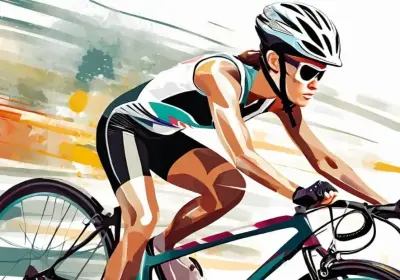

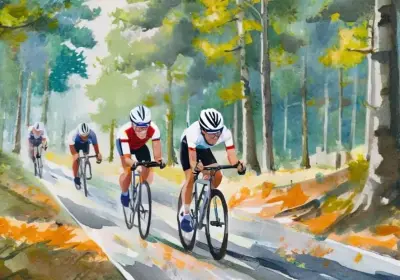

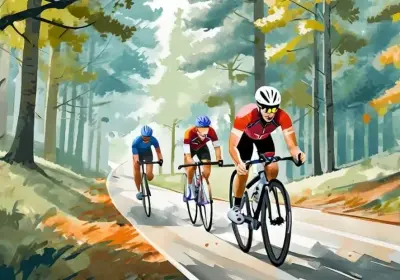



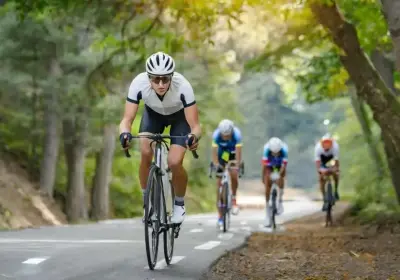








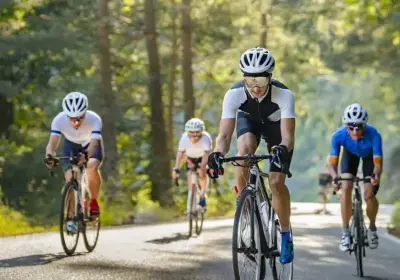
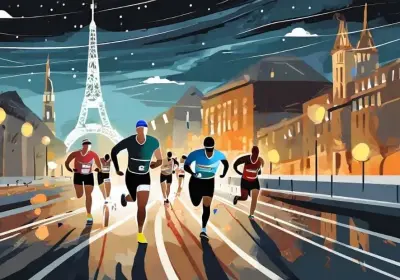

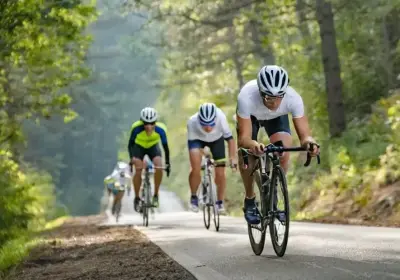

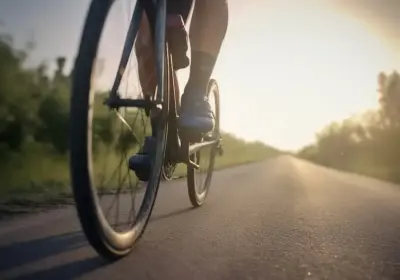





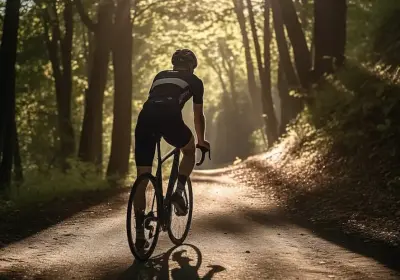









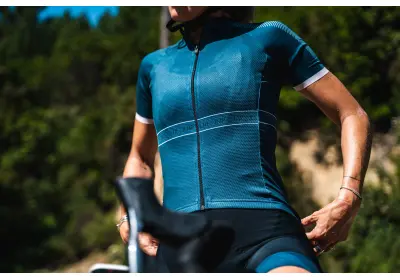




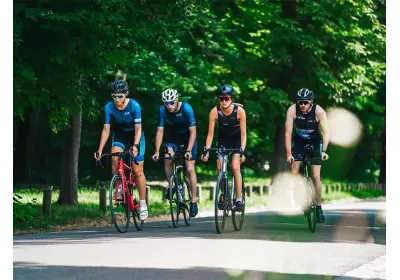


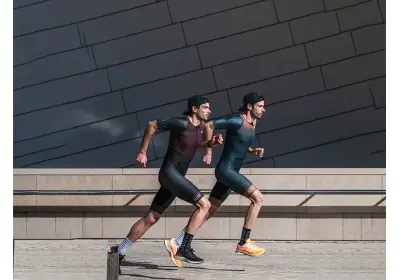
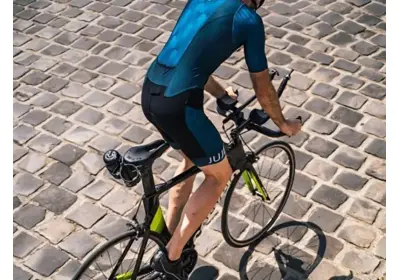
Leave a comment